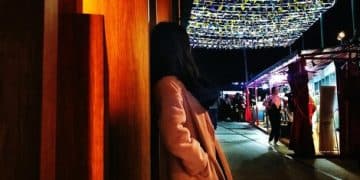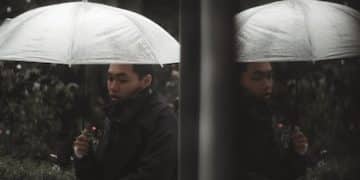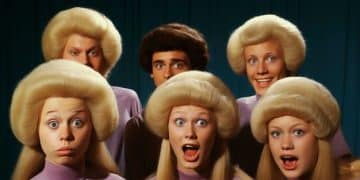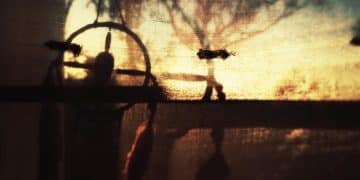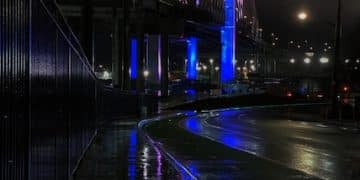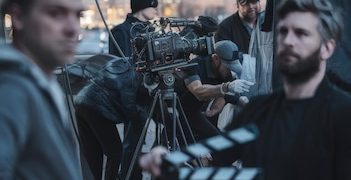The Evolution of Special Effects: A Visual History of Film Technology
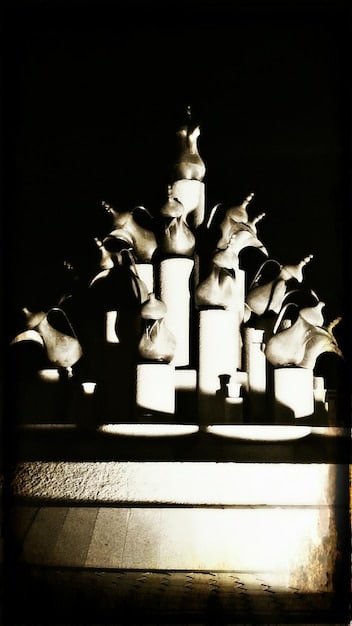
The evolution of special effects showcases a remarkable journey from rudimentary practical techniques to sophisticated digital wizardry, significantly transforming cinematic storytelling and enhancing audience experiences through groundbreaking visual innovations.
The world of cinema has always been a canvas for dreams, and the evolution of special effects: a visual history of film technology has been instrumental in bringing those dreams to life, transforming the impossible into breathtaking reality.
From Illusion to Innovation: Early Special Effects
The origins of special effects can be traced back to the late 19th century, with pioneers like Georges Méliès laying the groundwork for cinematic illusion. These early techniques, while simple by today’s standards, were revolutionary for their time.
The Magic of Méliès
Georges Méliès, a French illusionist and filmmaker, is often credited as one of the first to use special effects in cinema. His film “A Trip to the Moon” (1902) employed techniques like stop motion, multiple exposures, and dissolves to create fantastical imagery.
Early Animation Techniques
Another significant development in early special effects was animation. Pioneers like J. Stuart Blackton and Winsor McCay experimented with hand-drawn animation, bringing characters and stories to life in ways never before seen.
- Stop motion animation: Using static objects manipulated in small increments between individually photographed frames.
- Multiple exposure: Exposing the same piece of film multiple times to create layered effects.
- Matte painting: Used to create the illusion of environments that were too expensive or impossible to build.
These early techniques, though primitive, captivated audiences and set the stage for the more advanced special effects that would follow.
The Rise of Practical Effects in Hollywood’s Golden Age
As cinema entered its golden age, practical effects began to take center stage. These techniques relied on physical props, models, and on-set illusions to create believable visual experiences.
Miniature Models and Matte Paintings
Miniature models became a staple of Hollywood’s special effects arsenal. Filmmakers used detailed scale models to create everything from sprawling cityscapes to towering mountains.
The Art of Makeup and Animatronics
Makeup artists and animatronics experts also played a crucial role in the development of practical effects. They transformed actors into fantastical creatures and brought mechanical beings to life.
- Rear projection: Projecting pre-filmed footage onto a screen behind the actors to create the illusion of movement and background.
- Forced perspective: Using optical illusion to make objects appear larger, smaller, closer, or farther away.
- Pyrotechnics: Controlled explosions and fire effects to enhance action sequences.
The golden age of Hollywood saw the refinement of these practical techniques, resulting in some of cinema’s most memorable and visually stunning moments.
VFX: The Digital Revolution Begins
The late 20th century witnessed the dawn of the digital revolution in special effects. Computer-generated imagery (CGI) began to emerge as a powerful tool for creating visuals that were previously impossible.
Early CGI Breakthroughs
The introduction of CGI marked a significant turning point in special effects history. Films like “Tron” (1982) and “The Last Starfighter” (1984) showcased the early capabilities of computer-generated visuals.
The Rise of Motion Capture
Motion capture technology also gained traction during this period, allowing filmmakers to record the movements of actors and transfer them to digital characters. This technique paved the way for more realistic and nuanced CGI performances.
These early forays into digital imagery laid the foundation for the visual effects we see in modern cinema.
The Digital Age: CGI Takes Center Stage
As computers became more powerful and software more sophisticated, CGI began to dominate the landscape of special effects. This era saw the creation of some of cinema’s most visually ambitious and groundbreaking films.
Landmark CGI Films
Films like “Jurassic Park” (1993) and “Toy Story” (1995) demonstrated the full potential of CGI, creating realistic dinosaurs and fully animated worlds that captivated audiences worldwide.
The Evolution of Performance Capture
Performance capture technology continued to advance, allowing actors to deliver nuanced and emotional performances as digital characters. Films like “The Lord of the Rings” trilogy (2001-2003) showcased the power of this technique.
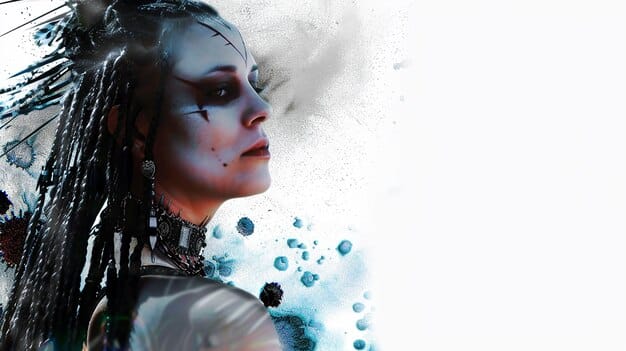
- Digital compositing: Combining multiple elements, such as live-action footage and CGI, into a single seamless image.
- Fluid simulation: Creating realistic simulations of water, fire, and other fluids.
- Procedural generation: Using algorithms to generate detailed and complex environments.
The digital age brought about a paradigm shift in special effects, empowering filmmakers with unprecedented creative control and visual capabilities.
Blending Practical and Digital Effects: The Best of Both Worlds
In recent years, there has been a growing trend towards blending practical and digital effects to achieve the most realistic and visually compelling results. This approach combines the tactile authenticity of practical effects with the limitless possibilities of CGI.
The Resurgence of Practical Effects
Many filmmakers are now opting to use practical effects whenever possible, recognizing the unique qualities they bring to a film. This resurgence of practical effects has led to a more nuanced and grounded approach to visual storytelling.
Hybrid Approaches to Visual Effects
By combining practical and digital effects, filmmakers can create visuals that are both realistic and fantastical. This hybrid approach allows for greater flexibility and creative freedom.
The integration of practical and digital effects represents a new era in special effects, one that values both authenticity and innovation.
The Future of Special Effects: AI and Beyond
The field of special effects is constantly evolving, with new technologies and techniques emerging all the time. Artificial intelligence (AI) is poised to play a significant role in the future of visual effects, offering exciting possibilities for automation and creativity.
AI-Powered Visual Effects
AI algorithms can be used to automate tasks such as rotoscoping, compositing, and even the generation of entire scenes. This can significantly reduce the time and cost associated with special effects production.
- Virtual reality (VR): Creating immersive and interactive experiences for viewers.
- Augmented reality (AR): Overlaying digital elements onto the real world.
- Real-time rendering: Generating visuals in real-time, allowing for interactive and dynamic experiences.
The future of special effects is likely to be shaped by the convergence of AI, VR, AR, and other emerging technologies, pushing the boundaries of what is visually possible.
The Impact of Special Effects on Storytelling
Special effects have fundamentally transformed the way stories are told in cinema, allowing filmmakers to create immersive worlds, bring fantastical characters to life, and enhance the emotional impact of their narratives.
By pushing the boundaries of visual possibility, special effects have opened up new avenues for creative expression and storytelling in film.
| Key Point | Brief Description |
|---|---|
| 🎬 Early Cinema | Méliès pioneered effects like stop motion and multiple exposure. |
| 🌟 Golden Age | Practical effects dominated, including miniatures and matte paintings. |
| 💻 Digital Era | CGI revolutionized film, enabling unprecedented visual possibilities. |
| 🤖 Future Trends | AI and virtual reality are set to reshape the landscape of VFX. |
Frequently Asked Questions
▼
Early techniques included stop motion, multiple exposure, and matte paintings, often used by pioneers like Georges Méliès to create fantastical scenes.
▼
Practical effects defined the era, with miniatures, makeup, and animatronics bringing imaginative scenarios to life using physical props and illusions.
▼
CGI started making its mark in the late 20th century with groundbreaking films like “Tron,” showcasing the initial capabilities of computer-generated visuals.
▼
Motion capture allows filmmakers to record actors’ movements and transfer them to digital characters, achieving more realistic and nuanced performances.
▼
AI is expected to automate various VFX tasks, from rotoscoping to scene generation, potentially reducing production time and costs while also enhancing creative possibilities.
Conclusion
From the rudimentary illusions of early cinema to the sophisticated digital wizardry of today, the evolution of special effects has been a transformative journey. These advancements have not only revolutionized filmmaking techniques but have also profoundly impacted storytelling, enabling filmmakers to create immersive worlds and bring their most imaginative visions to life. As we look to the future, the integration of AI and emerging technologies promises even more remarkable developments in the realm of special effects, ensuring that cinema will continue to captivate and inspire audiences worldwide.
